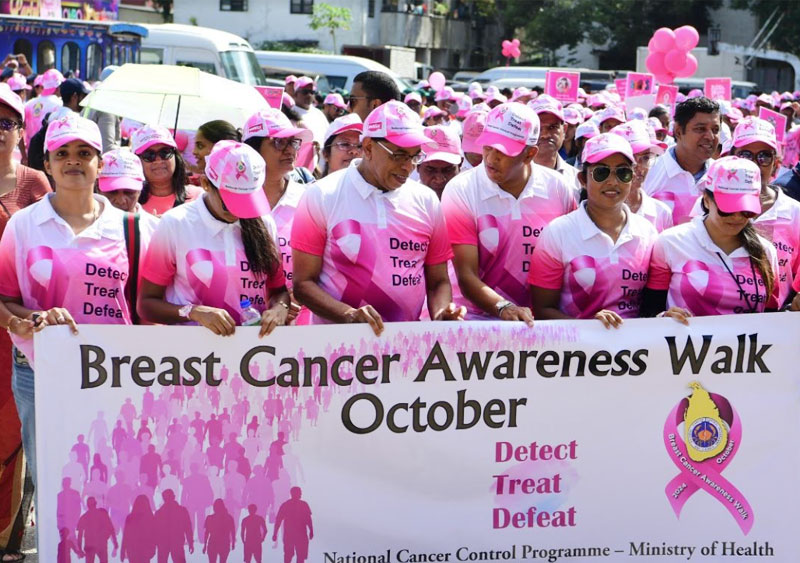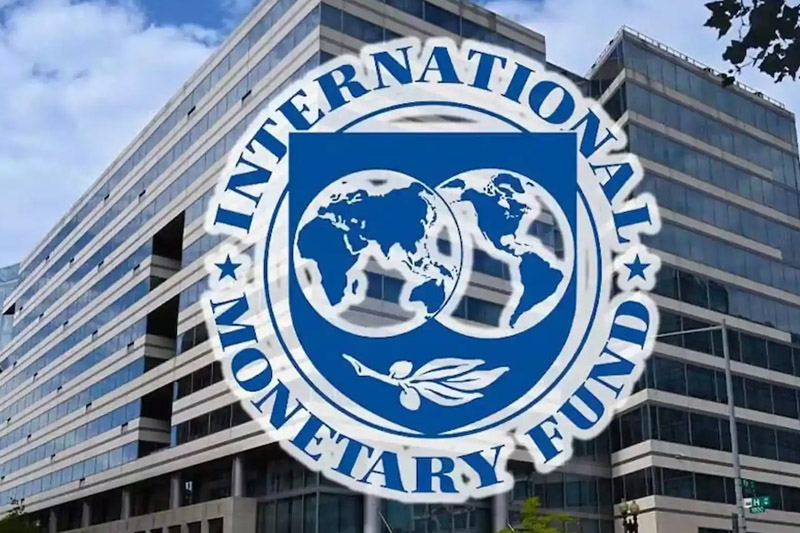The National Cancer Control Programme (NCCP) of the Health Ministry in collaboration with the Lions Club, Sri Lanka Police, civil organisations, Government institutions and private institutions organised a Cancer Awareness Walk
from Thimbirigasyaya Police Field Force Headquarters premises to Havelock City on Wednesday to mark the month-long breast cancer awareness month of October.
“Let’s find out. Let’s treat. Let’s win.’’ is this year’s theme for Breast Cancer Awareness Month.
A large number of representatives of the NCCP and other institutions participated in the walk holding placards and creating awareness about cancer, early detection etc.
Health Ministry Secretary Dr. Palitha Mahipala said “According to the statistics of the World Health Organisation (WHO), Breast Cancer is the most common cancer globally with around 2.3 million women diagnosed with breast cancer and 670, 000 deaths globally.
It represents one in eight cancer cases in both sexes and a quarter of all cancers in women with 70 percent mortality occurring in resource constrained settings.”
Cricketer Roshan Mahanama, Additional Secretary (Public Health) of the Health Ministry Dr. Lakshmi Somatunga, Deputy Director General (Non-Communicable Diseases) Dr. Champika Wickramasinghe, and National Cancer Control Programme Director Dr. Sudath Samaraweera also participated.
As per the statistics of the WHO, nearly 99 percent of breast cancers occur in women and 0.5–1 percent of breast cancers occur in men.
The treatment of breast cancer in men follows the same principles of management as for women.
In Sri Lanka, breast cancer is the most common cancer, with 15 women diagnosed every day and two succumbing to the disease.
Fortunately, early detection of breast cancer significantly increases the chances of successful treatment.
Breast cancer awareness month has been celebrated globally every October to create awareness about breast cancer since the eighties.
It is called ‘Pink October’ as people around the world adopt the pink colour and display a pink ribbon to raise awareness about the importance of prevention and routine screening for the early diagnosis of breast cancer.
By wearing pink, the individuals aim to raise awareness and promote early detection through regular self-breast examinations, timely diagnosis, comprehensive treatment and the need to provide support for persons with lived experience including through patient navigation.
The WHO has launched the Global Breast Cancer Initiative (GBCI) in 2021 with the objective of reducing mortality rates by 2.5 percent per year by 2040 to save 2.5 million lives through three key pillars of action on health promotion for early detection, timely diagnosis; and comprehensive breast cancer management.
The WHO says that certain factors increase the risk of breast cancer including increasing age, obesity, harmful use of alcohol, family history of breast cancer, history of radiation exposure, reproductive history (such as age that menstrual periods began and age at first pregnancy), tobacco use and postmenopausal hormone therapy.
“Nearly half of breast cancers develop in women who have no identifiable breast cancer risk factor other than gender (female) and age (over 40 years),” WHO sources said.
Family history of breast cancer increases the risk of breast cancer, but most women diagnosed with breast cancer do not have a known family history of the disease.
Lack of a known family history does not necessarily mean that a woman is at reduced risk.
Certain inherited high penetrance gene mutations greatly increase breast cancer risk, the most dominant being mutations in the genes BRCA1, BRCA2 and PALB-2.
Women found to have mutations in these major genes may consider risk reduction strategies such as surgical removal of both breasts or chemoprevention strategies.
According to the WHO, most people will not experience any symptoms when the cancer is still early hence the importance of early detection.
Breast cancer can have combinations of symptoms, especially when it is more advanced.
Symptoms of breast cancer can include: a breast lump or thickening, often without pain change in size, shape or appearance of the breast dimpling, redness, pitting or other changes in the skin change in nipple appearance or the skin surrounding the nipple (areola) abnormal or bloody fluid from the nipple.
“People with an abnormal breast lump should seek medical care, even if the lump does not hurt. Most breast lumps are not cancerous. Breast lumps that are cancerous are more likely to be successfully treated when they are small and have not spread to nearby lymph nodes. Breast cancers may spread to other areas of the body and trigger other symptoms. Often, the most common first detectable site of spread is to the lymph nodes under the arm although it is possible to have cancer-bearing lymph nodes that cannot be felt. Over time, cancerous cells may spread to other organs including the lungs, liver, brain and bones. Once they reach these sites, new cancer-related symptoms such as bone pain or headaches may appear.”






















